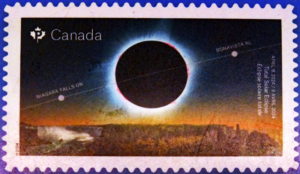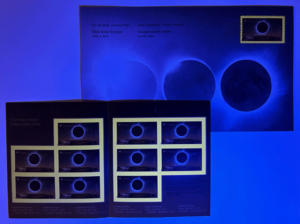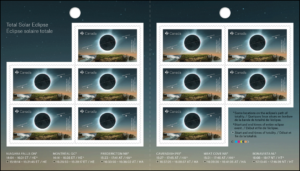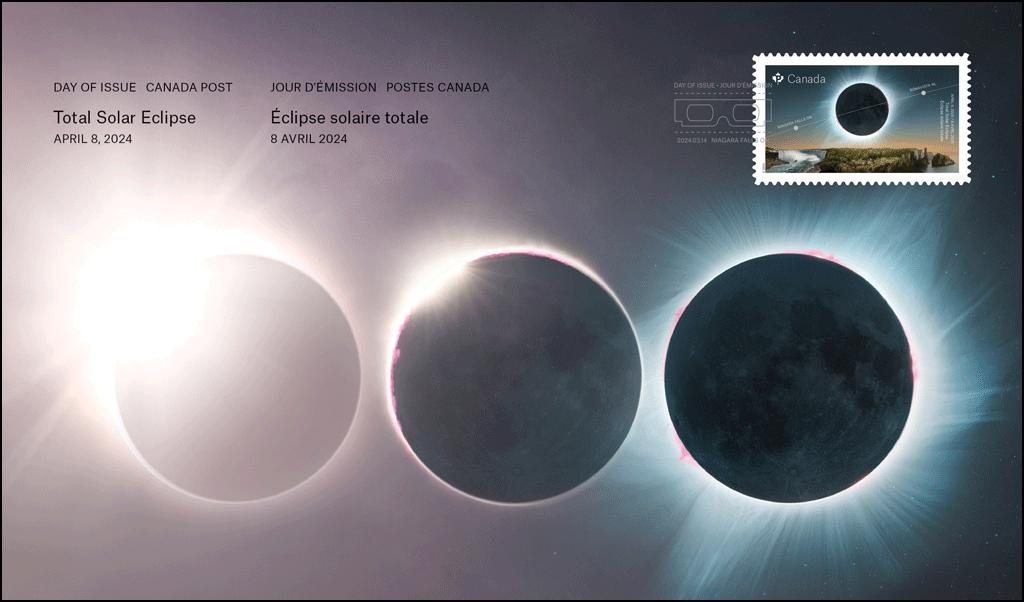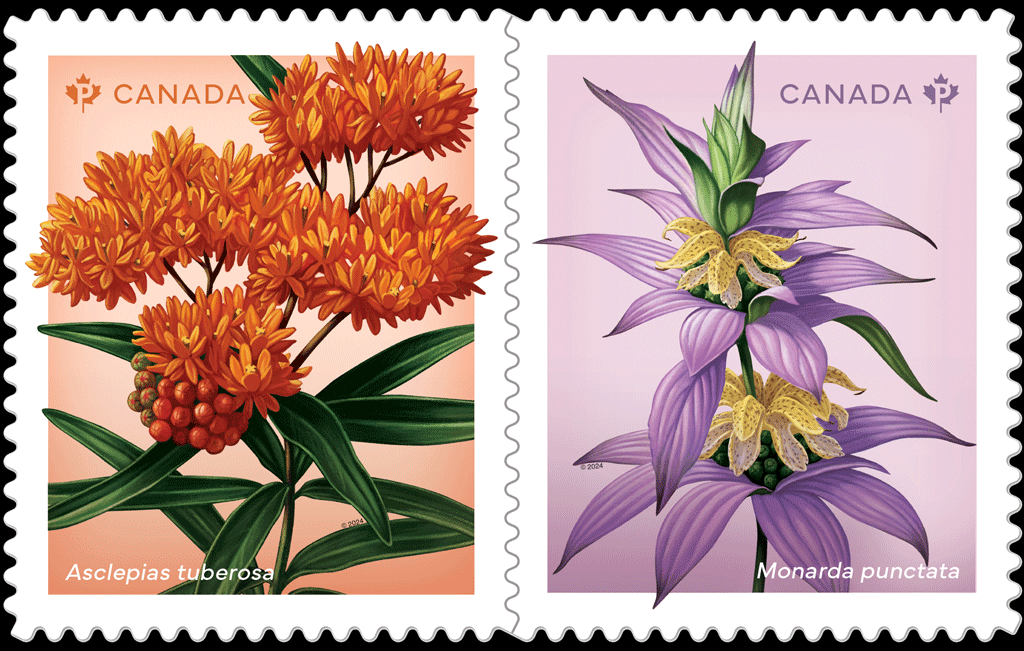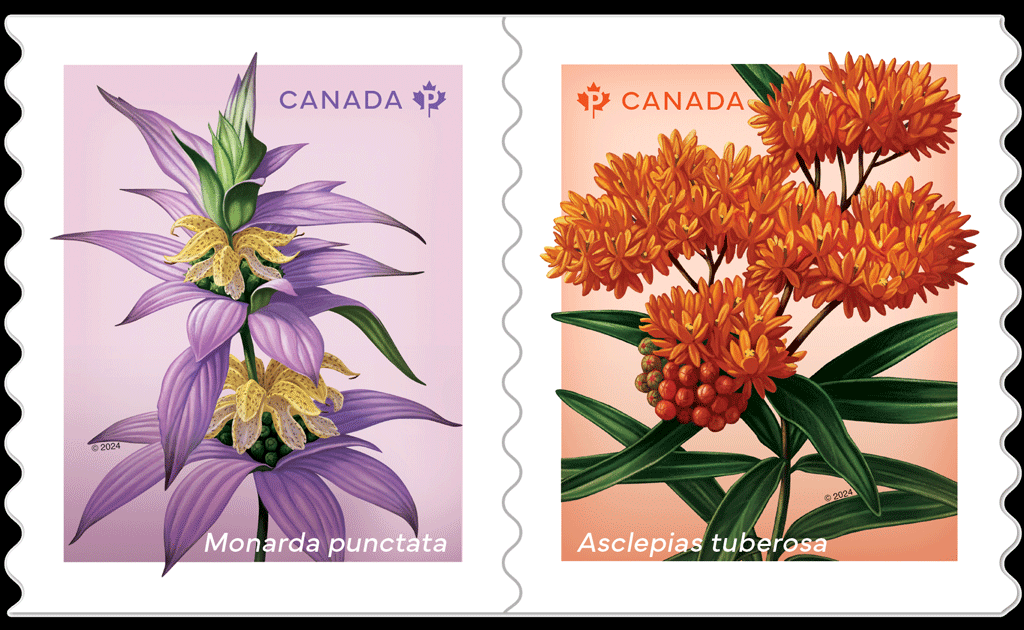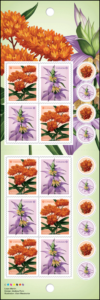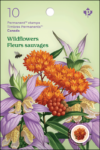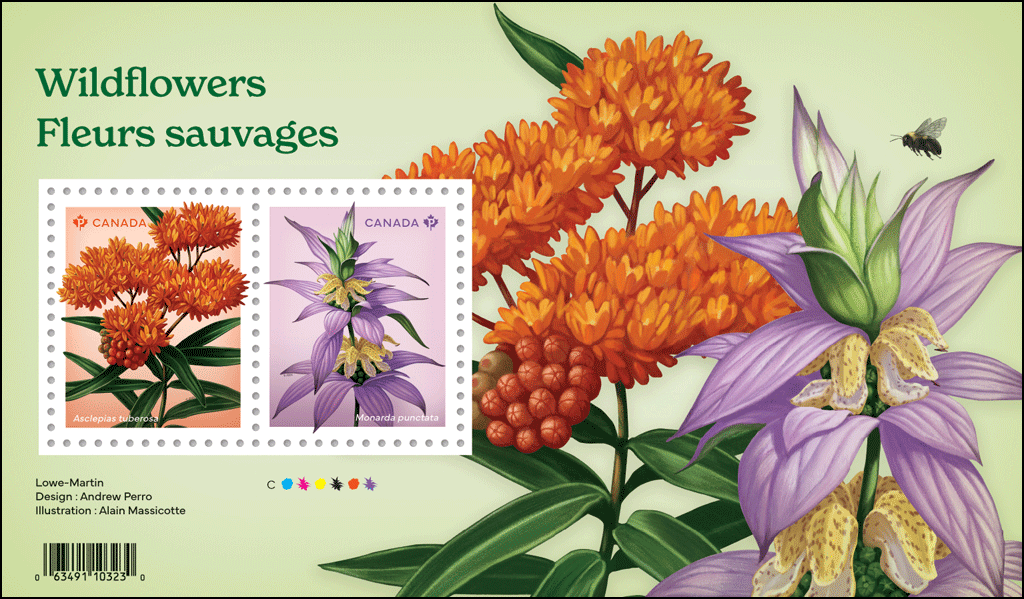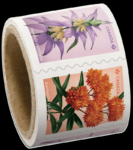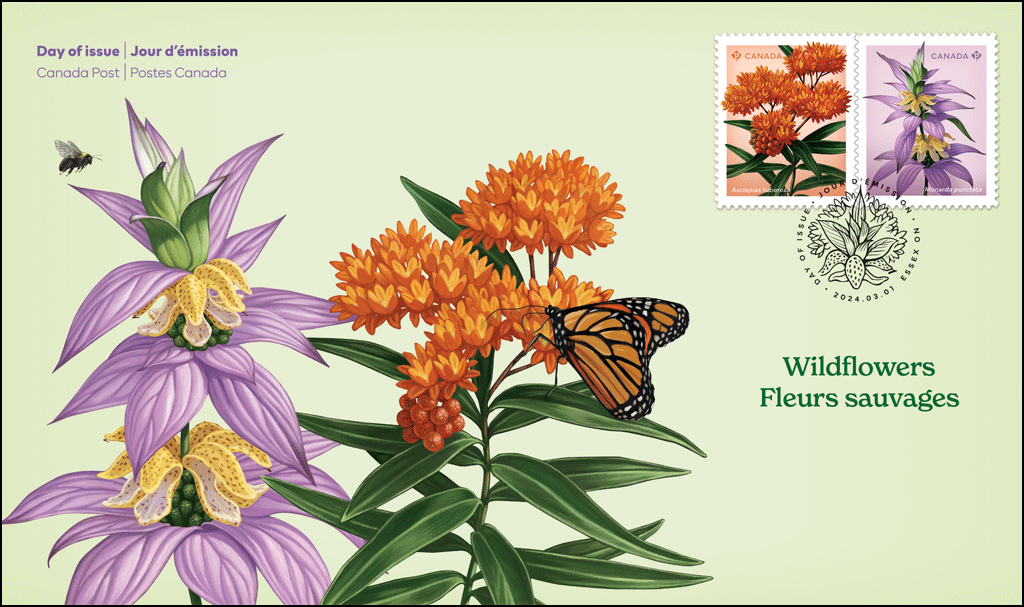by Danforth Guy
Another first look: The stamp marking Eid (Eid al-Fitr) from Canada Post acknowledges the 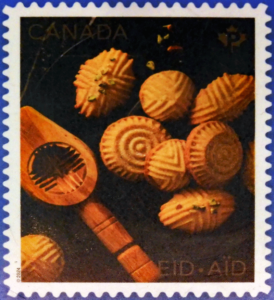 end of the fast of Ramadan with cakes and sweets that are typically enjoyed.
end of the fast of Ramadan with cakes and sweets that are typically enjoyed.
Eid occurs this year on April 9-10. One postal source says the stamp is set to come out in a few days. A national stamp organization says April. The Virtual Stamp Club says November, which doesn’t coincide with the holiday. [That was from a Canada Post release on December 20th.]
The stamps will sell in booklets of 6 at the domestic rate of 92c (‘P’). There is no first day location information.
This image comes from a post office placemat, hence the low quality. (But we have cleaned it up. Click on this image for a larger version.)
Updated March 28th:
[press release] [click on any of the pictures for larger versions]
Stamp showcasing maamoul commemorates Islamic festivals of Eid al-Fitr and Eid al-Adha
Canada Post is proud to mark two festivals, celebrated by more than
a million Muslims in Canada, with stamp featuring the popular treat
OTTAWA – Canada Post issued a new stamp today to mark two important Islamic holidays: Eid al-Fitr and Eid al-Adha. The commemorative stamp features maamoul, 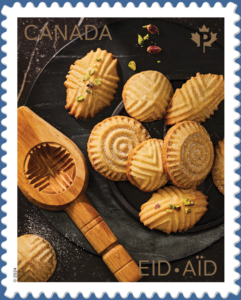 Middle Eastern cookies, and a traditional carved wooden mould used to make them.
Middle Eastern cookies, and a traditional carved wooden mould used to make them.
Melt-in-your-mouth cookies stuffed with a delicious walnut, pistachio or date filling, maamoul are a sweet staple during Eid celebrations. They are traditionally handmade from semolina and flavoured with fragrant rose or orange-blossom water andmahlab – a spice made from ground cherry pits. Before baking, the balls of dough are stuffed with walnut, pistachio or date filling and formed with specially carved wooden moulds.
Early versions of maamoul can be traced back to ancient Egypt and Mesopotamia. Today, family and friends often gather before Eid al-Fitr and Eid al-Adha to bake the cookies together. Served to guests and given as gifts, maamoul are also made across much of the Middle East to celebrate other holidays, such 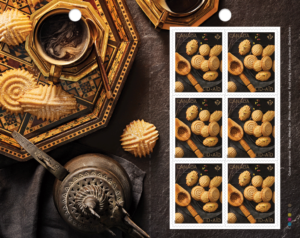 as Easter and Purim.
as Easter and Purim.
This year, Eid al-Fitr – the Festival of Breaking the Fast – begins in April, after the end of Ramadan. The stamp was issued today, so that it can be used to send greetings before the festival. Eid al-Adha, or the Festival of Sacrifice, marks the end of the Hajj pilgrimage to Mecca, Saudi Arabia, the holiest Muslim city. In 2024, Eid al-Adha begins in June.
Celebrated by more than one million Muslims in Canada, both events can last several days and include communal prayers and feasts, visits with family, gift-giving and acts of charity.
Celebrating Canada’s culturally diverse population
The 2024 issue is Canada Post’s sixth Eid stamp; the others were issued in 2017, 2020, 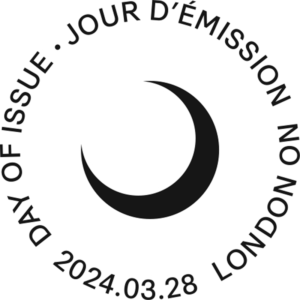 2021, 2022 and 2023.
2021, 2022 and 2023.
The Eid stamp is one of several stamps Canada Post issues each year to mark annual celebrations important to Canada’s culturally diverse population – others include Diwali, Hanukkah and Christmas.
About the stamp
The stamp was designed by Kristine Do, photographed by Maya Visnyei, with food styling by David Grenier. Printed by Colour Innovations, the issue includes booklets of six Permanent™ domestic rate stamps and an Official First Day Cover cancelled in London, Ontario.
The new stamp and collectibles are available at canadapost.ca and postal outlets across Canada.
[en Francais pour les médias d’information]
Un timbre consacré aux maâmouls souligne les fêtes islamiques de l’Aïd al-Fitr et de l’Aïd al-Adha
Postes Canada est fière de souligner deux fêtes célébrées par plus d’un million de personnes au Canada avec un timbre mettant en vedette ces biscuits populaires.
OTTAWA – Postes Canada a émis un nouveau timbre aujourd’hui pour souligner deux fêtes islamiques importantes : l’Aïd al-Fitret l’Aïd al-Adha. Le timbre commémoratif met en  vedette des maâmouls, des biscuits du Moyen-Orient, et le moule en bois sculpté traditionnel utilisé pour les façonner.
vedette des maâmouls, des biscuits du Moyen-Orient, et le moule en bois sculpté traditionnel utilisé pour les façonner.
Les délicieux biscuits sablés fourrés de noix de Grenoble, de pistaches ou de dattes sont un incontournable lors des fêtes de l’Aïd. Ils sont traditionnellement fabriqués à la main à partir de semoule et parfumés avec de l’eau de rose ou de fleur d’oranger et du mahaleb (de l’arabe mahlab), une épice faite à partir de noyaux de cerise broyés. Avant la cuisson, les boules de pâte sont fourrées de noix de Grenoble, de pistaches ou de dattes, et modelées à l’aide de moules en bois spécialement sculptés.
Des versions antérieures remontent à l’Égypte ancienne et à la Mésopotamie. Aujourd’hui, membres de la famille et autres proches se rassemblent souvent avant l’Aïd al-Fitr et l’Aïd al-Adha pour préparer les biscuits ensemble. Servis aux convives et offerts en cadeau, les maâmouls sont également cuisinés au Moyen-Orient à l’occasion d’autres fêtes, comme  Pâques et Purim.
Pâques et Purim.
Cette année, l’Aïd al-Fitr, ou fête de la rupture du jeûne, commence en avril, après le ramadan. Le timbre a été émis aujourd’hui afin qu’on puisse l’utiliser pour envoyer des vœux avant la fête. L’Aïd al-Adha, ou fête du sacrifice, souligne la fin du pèlerinage du Hajj à La Mecque, en Arabie saoudite, la ville musulmane la plus sacrée. En 2024, elle commence en juin.
D’une durée de plusieurs jours, les fêtes sont célébrées par plus d’un million de fidèles au Canada. Elles sont généralement synonymes de prières communes, de visites familiales, de festins partagés, de cadeaux et d’actes de charité.
Célébrer la diversité culturelle du Canada
L’émission de 2024 est le sixième timbre de l’Aïd de Postes Canada; les autres ont été émis en 2017, 2020, 2021, 2022 et 2023.
 La vignette consacrée à l’Aïd fait partie des nombreuses émissions annuelles soulignant des fêtes importantes pour la population diversifiée du Canada, notamment Diwali, Hanoukka et Noël.
La vignette consacrée à l’Aïd fait partie des nombreuses émissions annuelles soulignant des fêtes importantes pour la population diversifiée du Canada, notamment Diwali, Hanoukka et Noël.
À propos du timbre
Le timbre a été conçu par Kristine Do, la photo prise par Maya Visnyei et le stylisme culinaire réalisé par David Grenier. Imprimée par Colour Innovations, l’émission comprend un carnet de six timbres Permanents🅪 au tarif du régime intérieur et un pli Premier Jour officiel oblitéré à London, en Ontario.
Le timbre et les articles de collection sont en vente sur postescanada.ca et dans les comptoirs postaux partout au pays.


